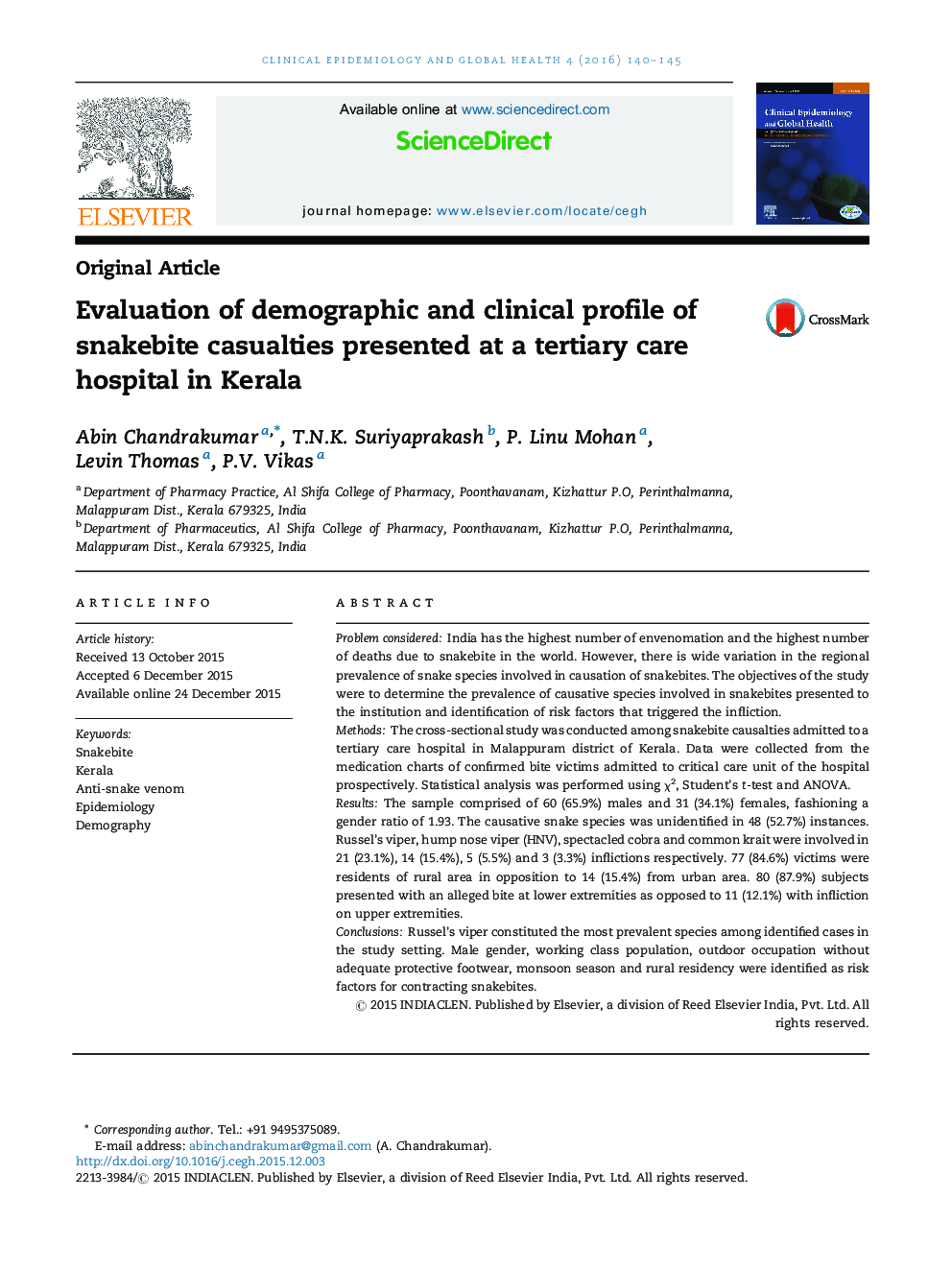| کد مقاله | کد نشریه | سال انتشار | مقاله انگلیسی | نسخه تمام متن |
|---|---|---|---|---|
| 3396220 | 1408053 | 2016 | 6 صفحه PDF | دانلود رایگان |
Problem consideredIndia has the highest number of envenomation and the highest number of deaths due to snakebite in the world. However, there is wide variation in the regional prevalence of snake species involved in causation of snakebites. The objectives of the study were to determine the prevalence of causative species involved in snakebites presented to the institution and identification of risk factors that triggered the infliction.MethodsThe cross-sectional study was conducted among snakebite causalties admitted to a tertiary care hospital in Malappuram district of Kerala. Data were collected from the medication charts of confirmed bite victims admitted to critical care unit of the hospital prospectively. Statistical analysis was performed using χ2, Student's t-test and ANOVA.ResultsThe sample comprised of 60 (65.9%) males and 31 (34.1%) females, fashioning a gender ratio of 1.93. The causative snake species was unidentified in 48 (52.7%) instances. Russel's viper, hump nose viper (HNV), spectacled cobra and common krait were involved in 21 (23.1%), 14 (15.4%), 5 (5.5%) and 3 (3.3%) inflictions respectively. 77 (84.6%) victims were residents of rural area in opposition to 14 (15.4%) from urban area. 80 (87.9%) subjects presented with an alleged bite at lower extremities as opposed to 11 (12.1%) with infliction on upper extremities.ConclusionsRussel's viper constituted the most prevalent species among identified cases in the study setting. Male gender, working class population, outdoor occupation without adequate protective footwear, monsoon season and rural residency were identified as risk factors for contracting snakebites.
Journal: Clinical Epidemiology and Global Health - Volume 4, Issue 3, September 2016, Pages 140–145
